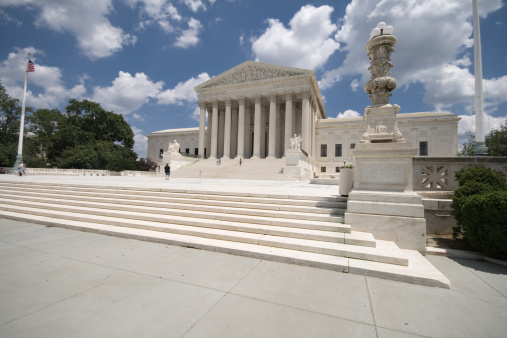What happens if the EEOC doesnât go all-out in an attempt to resolve discrimination complaints with employers before filing a lawsuit? That was the question before the Supreme Court.
The case was brought to the court by Mach Mining LLC, an employer claiming the EEOC didn’t do what it was required to do under federal law to resolve discrimination claims prior to filing a lawsuit.
Title VII of the Civil Rights Act requires the EEOC — prior to filing a lawsuit — to attempt to conciliate a dispute with an employer after the agency finds reasonable cause to believe the employer discriminated against a worker.
Did it conciliate ‘in good faith’?
This all started when a women, who’d applied to be a coal miner with Mach Mining filed a complaint with the EEOC that the company denied her employment because she was a woman.
The EEOC then investigated and determined there was reasonable cause to believe Mach Mining was guilty of discrimination. The EEOC then invited the claimant and Mach Mining to engage in informal methods of dispute resolution.
According to the case before the High Court, both parties were then told the EEOC would contact them to begin the conciliation process. About a year later, the EEOC informed Mach Mining via a letter that the conciliation process had failed. Shortly after, it filed suit against Mach Mining.
In the lawsuit, the EEOC claimed it fulfilled its obligation to attempt conciliation. But Mach Mining countered, saying the EEOC failed to conciliate “in good faith.”
The EEOC then said the court had no authority to review its conciliation efforts. And again, Mach Mining took the opposite stance, claiming the court had the authority to review the reasonableness of the EEOC’s conciliation efforts.
A district court ruled in favor of Mach Mining. The Seventh Circuit court then reversed that decision.
So before the High Court the issue went.
What was hanging in the balance?
A win for Mach Mining would’ve surely limited the EEOC’s ability to expedite the conciliation process and jump into a lawsuit, thus giving employers a better shot at settling charges out of court.
So on which side did the Supreme Court fall?
In a 9-0 consensus, the High Court took Mach Mining’s side and ruled courts do have the authority to review whether the EEOC has fulfilled its conciliation obligations.
But employers shouldn’t pop the champagne just yet; this doesn’t appear to be the win they were hoping for.
The problem: While the High Court said it’s well within other courts’ authority to review the EEOC’s conciliation process, it put pretty strict limits on how deep courts can actually dig into the process.
In fact, the limits are so strict the EEOC is actually treating the ruling as a victory.
In a recent news release on the ruling, the EEOC called it, “a step forward for victims of discrimination.”
EEOC General Counsel David Lopez said in the release:
“This unanimous decision is great news for victims of discrimination on whose behalf we are seeking relief — and for the public, which ultimately benefits from our work. As the court noted, Title VII is about substantive outcomes. We are pleased the court rejected the intrusive review proposed by the company and its supporters. The court recognized that the scope of review is narrow and a sworn affidavit is generally sufficient to meet the statutory requirements. If the employer has concrete evidence that such efforts were not made and the court finds in favor of the employer, the remedy is further conciliation.”
What can courts do?
Five critical aspects of the Supreme Court’s ruling:
- Title VII’s conciliation mandate only requires the EEOC to notify an employer of the claims against it and give the employer an opportunity to discuss the matter. The notice must describe what the employer has done and identify the employees (or class of employees) that have been effected. The EEOC must try to engage the employer in a discussion to provide the employer with a chance to remedy the allegedly discriminatory practice.
- Title VII does not, require a good-faith negotiation between the EEOC and the employer.
- Courts can review whether the EEOC has fulfilled this conciliation obligation.
- All the EEOC needs to produce before a court to prove the agency has fulfilled its conciliation obligation is a sworn affidavit stating it gave the employer notice and an opportunity to achieve voluntary compliance.
- If an employer is able to produce “concrete evidence” the EEOC did not provide it with information about the charges against it or a chance to resolve them voluntarily, a court can only stay the proceeding and require the EEOC to meet its conciliation obligation.
Bottom line: While this case could be considered a win for Mach Mining (albeit a slim one), it could also be an affirmation of just how much power the EEOC has when it comes to perusing discrimination claims against employers. The EEOC is certainly taking it as the latter.
Cite: Mach Mining LLC v. EEOC
For more HR News, please visit: Supreme Court ruling a âhuge step forward’: But for EEOC or employers?
Source: News from HR Morning
